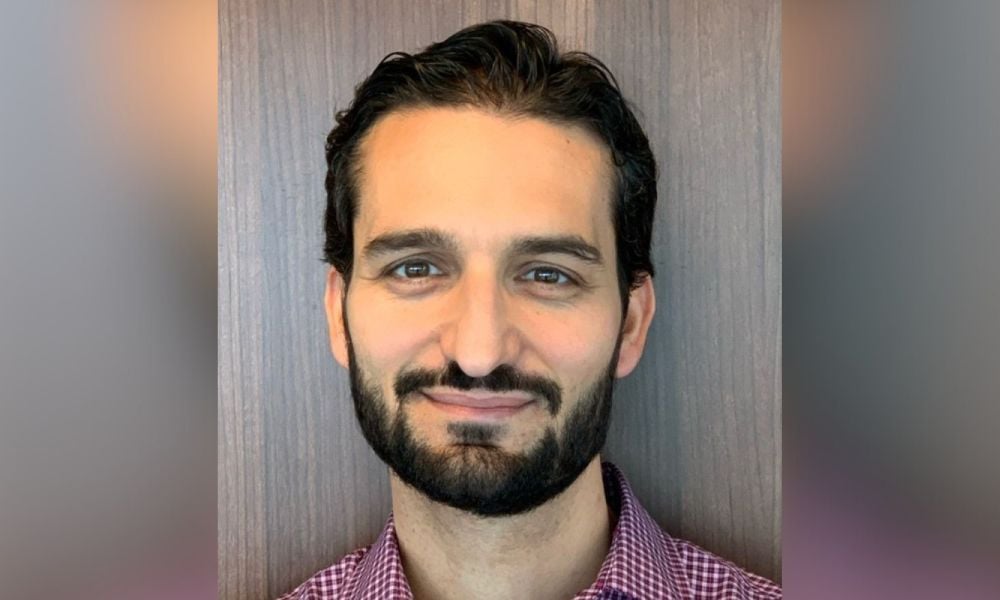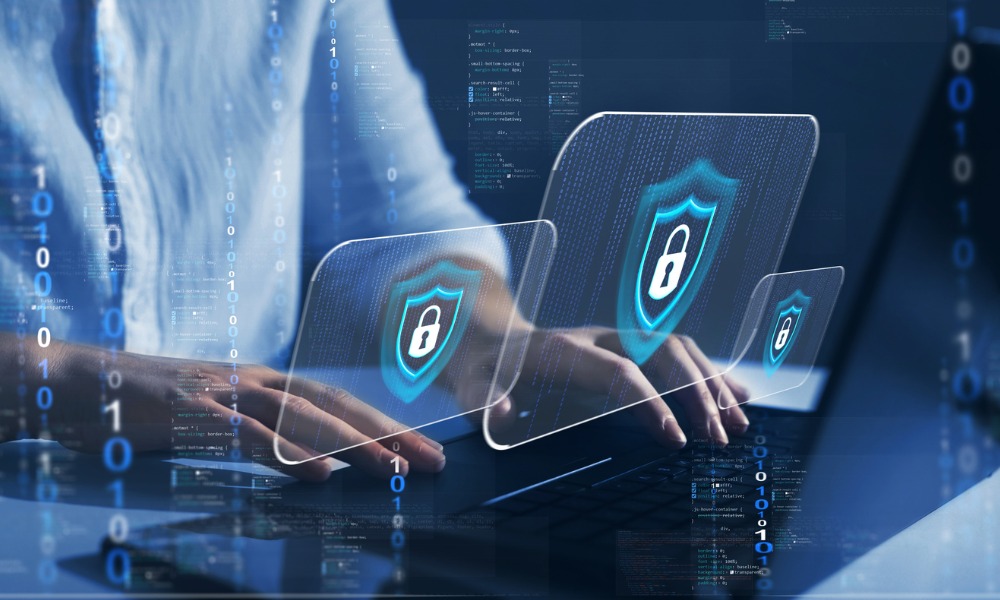As it turns out, the ongoing debate about the extent to which emerging legal technology, particularly artificial intelligence (AI), will make lawyers redundant or at least reduce the profession to a small colony of high-level strategists, misses the point.
The truth is that no one really cares — at least among business law clients, the population that matters to the legal market. Business law clients, after all, are much like patients. When all is said and done, what they really want is a cost-effective solution that is as painless as possible with as little distraction and diversion as their professional advisers can serve up. How the professionals serve this up matters little, so long as they respect appropriate standards.
The foundational question that does matter — regardless of the form in which the law firm and the practice of law ultimately emerge — is about who will survive and prosper in the new environment. For it is fraught with challenges, not the least of which is the unstinting pace of the frantic legal tech evolution that drives what is already a revolution in the practice as a whole.
The unfortunate part is that while clients are clearly the drivers of change, many are planted firmly in the back seat. Interviews conducted by Legal Week Intelligence and international law firm Bird & Bird, found that while general counsel (GCs) recognize that an AI revolution has begun, they are not yet participants. As reported in the November 2017 issue of Corporate Counsel magazine, the interviews also revealed that:
Very few GCs were testing or implementing AI systems;
Many GCs pursued new technology cautiously absent demonstrable and tangible benefit to their departments’ operation and efficiency;
The use of technology was uneven across organizations, varying between jurisdictions and departments;
Because law departments don’t generate revenue, new IT investment could be hard to justify;
And, GCs are divided as to the long-term practical benefits of AI.
The overall impression is that many GCs are sitting back and waiting for their external counsel to take the initiative. Indeed, interviewers found that GCs would like “a more proactive stance from law firms in sharing the potential benefits of AI — through testing, implementation and cost saving.”
According to Mark Rigotti, CEO of international law firm Herbert Smith Freehills, writing in a firm publication entitled Artificial Intelligence: The client perspective, clients have “strong and varied views on why their private practice firms need to respond to new and potentially disruptive technologies.” Not only do clients believe that AI will enhance efficiency, they believe that it will encourage “an enhanced engagement” with their law firms: “Clients want their law firms to move beyond traditional transactional lead delivery to a new, more collaborative relationship model.”
The upshot is that even as the clients drive the bus from the back seat, they expect law firms to steer the course and keep the tank full. Whether or not clients’ laid-back tendencies will impair the voyage remains to be seen. What seems indisputable, however, is that there is no sense sending an e-mail to someone without a computer, or a spreadsheet to someone who can’t navigate Excel. All the more so in the case of AI, whose “machine learning” capabilities are often rooted in continuing input from as many stakeholders as possible.
Still, the fact remains that clients drive the bus. To their credit, some firms have responded to clients’ demands for innovation by exploring the possibilities of technology aggressively.
Yet Chris Bentley, Managing Director of the Legal Innovation Zone and Law Practice program at Ryerson University in Toronto, is concerned about the pace of adoption. “There’s certainly more and more discussion, feelers and entreaties related to legal tech, and there are some real leaders in the profession,” he says. “But while there are islands of progress within the established law firm legal community and corporate legal departments, on the whole lawyers aren’t proceeding at the pace or urgency that is required.”
Matthew Peters, the Vancouver-based National Leader, Markets at McCarthy Tétrault LLP, says that the pressure on law firms to innovate may be creating the impression that individual firms are further along the tech curve than they assert they are. “There are people who are throwing $150,000 at some form of software and treating it like it’s a legal tech solution just so they can say they’re innovative,” he says. “That approach borders on disingenuous and serves to point out that the biggest challenge facing legal tech is that it is being used as a band-aid instead of improving the nuts and bolts of law firm processes.”
Sukesh Kamra, a lawyer and the Toronto-based National Director, Knowledge Management, at Norton Rose Fulbright Canada LLP, agrees that progress is uneven. “What we’re seeing is a true monumental disruption, where a culture based on precedent and conservative attitudes has had to open up and embrace change on many fronts, including legal tech, pricing, staffing and compensation,” he says. “It’s a complete revolution for which some firms are more ready than others.”
Norton Rose Fulbright appears to be in the ready group. The firm recently launched “Parker,” an interactive chatbot that will guide clients in determining their exposure and obligations under mandatary Canadian data breach laws and new regulations that will come into effect on Nov. 1 under the Personal Information Protection and Electronic Documents Act (PIPEDA). “Parker is a tool built on the IBM Watson platform that helps organizations understand whether they are subject to certain privacy laws,” says Ryan Berger, the Vancouver-based based co-chair of Norton Rose Fullbright’s data and privacy group.
The Canadian release follows on the success of Parker in Australia, where the program originated, and its subsequent modification to answer questions about the new European data protection law, the General Data Protection Regulation (GDPR), which came into effect on May 25, 2018. Parker’s GDPR version, developed by Norton Rose’s Australian arm, is primarily aimed at multinational businesses that need to determine whether and how the new law applies to them.
If the Australian and GDPR versions are any indication, Parker will be an unqualified success in Canada. The first 24 hours of Parker Australia’s December 2017 launch drew more than 1,000 conversations to the chatbot, with the number rising to 5,976 over the next six months. For its part, GDPR Parker rang up 3,826 conversations in the first 30 days after its launch.
“Generally, the average number of messages per conversation varies between four to six questions,” Berger says. “Taking an average of three minutes per conversation, Parker Australia has provided clients and potential clients with just shy of 300 hours of legal information.”
It’s all in the name of efficiencies. Cameron Belsher, the Vancouver and Toronto-based head of McCarthy Tétrault’s mergers and acquisitions (M&A) group, told Canadian Lawyer that AI due diligence tools have produced savings “of around 60 per cent, with greater cost predictability, efficiency, and accuracy.”
To achieve these efficiencies, McCarthy Tétrault relies heavily on Toronto-based Kira Systems contract analysis software. So do Davies Ward Phillips & Vineberg LLP; Osler, Hoskin & Harcourt LLP and Torys LLP.
And it’s not just M&A practices that can benefit from AI. Contract analysis software can also make for more efficient lease abstraction for Real Estate practices and enhance Financial Services practices by ensuring accuracy and consistency of advice. Stikeman Elliott LLP is using AI technology to build and train its own in-house repository for classifying, accessing and leveraging the firm’s knowledge tools; Cassels Brock & Blackwell LLP employs AI technologies to round up competitive intelligence information that might benefit the firm’s clients; Lavery Lawyers’ Lavery Legal Lab on Artificial Intelligence has combined AI with translation tools for patents and technical documents; and some years ago, Wortzman Nickle, Canada’s first law firm dedicated to e-discovery, was swallowed up by McCarthy Tétrault.
Osler, Hoskin & Harcourt LLP has created Osler Works – Transactional, an Ottawa-based 20-lawyer team integrated with other professionals that uses a combination of people, process and technology to support deal teams and clients.
“The team spends all of its time exploring and developing cutting-edge tech to streamline processes and reduce the time and cost involved in basic business transaction such as due diligence and contract review,” says Patricia Kosseim in Osler’s Ottawa office.
Quite apart from their functional utility, however, AI investments have become important talent attraction and retention tools for law firms. “I think what’s driving a lot of the change is there are new entrants to the profession who don’t care about how we’ve done things,” says Amy ter Haar, a program lawyer in legal curriculum design at York University’s Osgoode Hall Law School in Toronto. “It’s not legal tech that’s driving change — it’s today’s generation.”
And today’s generation is focused on quality of life, including meaningful work.
“Millenials have grown up in the digital age and they want to cut out the mindless and tedious tasks that often characterize associates’ and students’ workdays,” says Anne McNulty, Director of Legal Knowledge engineering at Kira. “AI helps them focus on learning.”
Kira allows users to import documents in more than 60 formats. It converts the files into machine readable form, and then uses machine learning models to identify concepts and clauses that the users specify. On-screen editing, workflow and collaborative tools allow users to refine the results in real time. Search and analysis functions identify issues and trends across documents, and allow comparisons between them that enable lawyers to identify subtle differences that may signal hidden risks or liabilities.
“Instead of entering a data room and wondering where to start, Kira gives lawyers tons of visibility right away so that they can target their clients’ needs in short order and determine what kind of expertise the M&A team will require from within the firm,” McNulty explains. “Training time is about one hour and the learning curve is short and very, very intuitive.”
To be sure, Kira’s software is not the first iteration of contract analysis software. Rules-based and comparison-based AI has been around for several decades. But these earlier generations of machine learning software required humans to predict the variability of documents and guidelines to identify particular clauses. They worked well for highly similar documents or simple provisions, such as those identifying the law governing the contract, but proved inconsistent in dealing with a wide range of agreements.
Kira isn’t the only game in town when it comes to contract analytics. Law Geex, Beagle, ThoughtRiver and Legal Robot are among its competitors.
Marko Trivun, a senior associate at Torys LLP in Toronto who focuses on the due diligence aspect of M&A, has been using Kira’s contract analysis software since 2015. He says that the software is changing the quality of his work in a positive way. “Kira takes the drudgery and monotony out of document review and allows lawyers to focus more on the legal skills they learned in law school in order to find the stuff that really matters,” he says.
Those concerned that AI will result in lost jobs will be relieved to learn, however, that Kira doesn’t replace legally trained human eyes. “With the drudgery out of the way, you end up with more energy and time doing the things for which you went to law school,” Trivun says. “Things you might not have caught are more likely to come to your attention.”
Having the technology, then, is all well and good. Using it optimally, or at least being prepared to use it, is another.
The key to successful training, says Norton Rose Fullbright’s Kamra, is to get a buy-in from the managing partner and then start small. When the firm implemented a new document automation system, Kamra invited 12 lawyers. The 10 who showed up quickly discovered that they could create first drafts of documents in seconds as opposed to taking much longer by starting from scratch or seeking out precedents. When the group asked for a second session, Kamra told them to use the interim to automate a document from beginning to end and then bring it to the next session. “I also told them to think hard about how to leverage the tech by putting it to practical use on a file or in court,” he says. “Proper training goes beyond attending law and just taking a tech course.”
On the development side, Kamra recommends “starting from small and learning from your mistakes.” Before developing the firm’s Canadian Parker chatbot with his team, he engaged with the Australian group which initiated the technology.
“We looked at the underlying technology, picked elements that worked for Canada,” he says. “Because legal technology has limits and won’t work in every situation, particularly when you add complicating factors like jurisdictional differences and varying practice approaches, it’s very hard to come up with a single solution that suits everyone.”
Law firms should be careful, Kamra adds, not to rely solely on their IT departments to build the required technology. “It helps to have an intermediary with knowledge management expertise who can bridge the factors that make sense for the process and the technical requirements that have to be met.”
At Blake, Cassels & Graydon LLP, responsibility for new legal technologies falls to the practice innovation team, which includes the knowledge management and pricing teams, data and analytics expertise, and former practising lawyers who help identify use cases specific to a practice.
“This team investigates and considers practice-facing legal technologies and tracks what is happening in the market,” says Carla Swansburg who, until recently, was chief officer, practice innovation, pricing and knowledge at Blakes. “In conjunction with Firm leadership and IT among others, the team identifies technologies that respond to a real use case.”
The deployment of these tools is a long process that requires a “high touch,” as Swansburg calls it. “We engage a group of lawyers and staff at the pilot stage and try and use real-life business issues, employing cases for testing the products to demonstrate value,” she says. “Once we decide to license or purchase a tool, we identify potential champions — people who will be open-minded and who we believe will see real value by incorporating the technology into their practice.”
While it takes a lot of “showing” and hands-on work to deploy these tools, the process speeds up once a group of lawyers is using something and seeing its worth. “Our professional training staff work with the practice innovation team, which helps the training synergy,” Swansburg says.
It also helps to engage with clients. “Our clients are often our best champions for change and we can use client value propositions as a hook for more reluctant lawyers,” Swansburg says. “We also find that working at the practice group level helps, because you can more clearly articulate the value of tools when you can demonstrate how they work within the lawyers’ own practice area.”
McCarthy Tétrault’s Peters says integrating legal tech is a change management issue that involves training, communication and measurement. “The challenge is to ensure that the technology has been properly implemented and that people are actually using it,” he says.
McCarthy Tétrault’s leans to a “project-by-project” approach that involves what Peters calls “walkaround” training. “We literally have experts walk the floor and sit down with lawyers to find out where there has been good pickup and where it is being ignored,” Peters says. “It works better than just rolling out with an email that says ‘Guess what we’re doing and good luck with it’.”
Osler, Hoskin & Harcourt uses a three-pronged approach to ensure its lawyers are technologically competent. Initially, the firm resorts to presentations on technology that are already available in-house. “The presentations are basically an introduction to the software’s capability and how to use it with the objective of demonstrating how to incorporate it into practice,” says Natalie Munroe, who leads Osler Works – Transactional from her Ottawa base.
Osler then integrates the technological training into the substantive training. “For example, in due diligence training, we also talk about the technology that is used to support due diligence,” Munroe says. “We don’t start with tech, rather we start with a problem that clients want us to solve. So when we train folks, we make sure they understand the service that the tech is supporting.”
Finally, hands-on training is made available. “For example, Kira’s contract analysis software is used only by Osler Works – Transactional, so we provide hands-on training in its use to students and associates working with us,” Munroe says. “That involves a high-level presentation that focuses on how we can incorporate technology and alternative services providers to best meet the clients’ needs.”
Clients are, after all, what it’s all about. And as the chief innovation officer of a leading global firm put it, the main risk to law firms is that they will lose their longstanding ability to charge for their inefficiencies. “Legal technology, particularly artificial intelligence, that involves computers performing functions far faster and better than lawyers and paralegals, will go to the heart of how law is practised in Canada and globally,” says Barry Leon, a mediator and arbitrator who practised with Torys and Perley-Robertson, Hill & McDougall LLP before serving as Commercial Court Judge of the High Court of the Eastern Caribbean Supreme Court.





